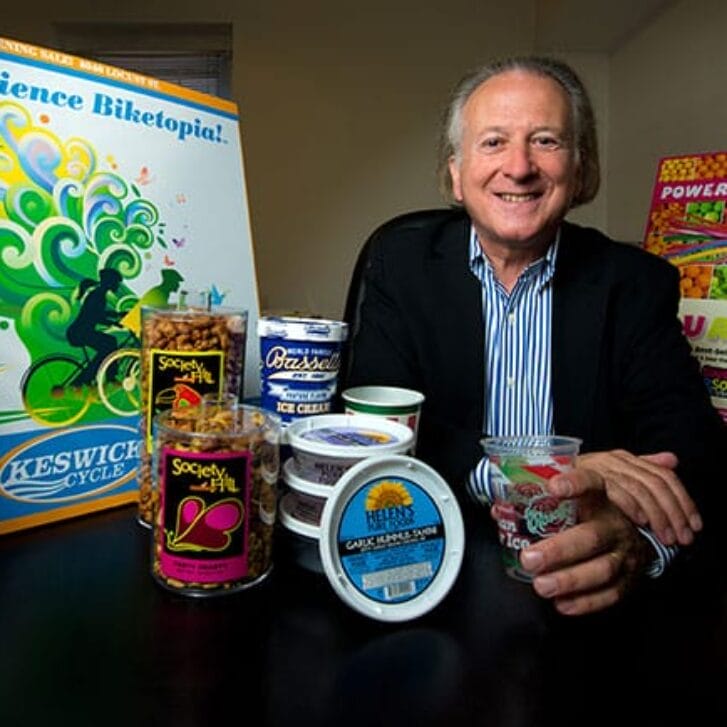There was a time when a Wharton undergrad degree used to guarantee lifelong professional success. When I was a student in 1999, we shared an air of confidence. We were businesspeople in training, entering a corporate world ripe with opportunities. If irrational exuberance was the zeitgeist, we were too excited about our future to notice.
Of course, whether it took two years or nine, all of us eventually learned that there are no guarantees in life—even for Wharton grads. The Wall Street we expected to welcome us when we emerged from our protective Locust Walk incubator would be no more.
My own career path was atypical. My choices were limited by an ideological decision to move to Israel after graduation, and the timing couldn’t have been worse. Israel was disproportionately affected by the dot-com bust; I basically moved there the day after, only to find myself slipping on the suds.
I had always envisioned myself working for a venture capital firm in Israel, evaluating and incubating exciting new technologies until the conditions would be ripe for me to start my own company. There were three things I always knew I wanted: to be involved in technology, to exercise creativity and to be my own boss.
But after eight grueling months of rejection, I begrudgingly took a job at one of the largest diamond manufacturers in the world, Leo Schachter.
I was trained from the bottom up. Spending days in the diamond cutting factory and sorting room was frustrating, but I received the best possible education in the diamond business. I gave the job my best shot, but it was never really fulfilling. I managed to design some technology-based solutions, which offered me temporary satisfaction, but opportunities to use my skills were rare. I presented my boss with different venture ideas that he liked, but he was too distracted to invest any resources to implement them.
Change came in 2008, when the economy was in shambles. The company downsized, and I was let go. It is perhaps at these moments that blessings are most disguised, yet present in abundance. It was time to change course—but in which direction?
Inspiration came from a conversation with my father. He told me, “Ira, I’m going to give you the same advice my dad gave me. Do what you know. You know diamonds and you know technology. Go figure out the solution.”
He was right. My knowledge of the diamond business was a valuable asset few could match. What if I could create a business that would allow me to be involved in technology, be creative, be my own boss and leverage my knowledge of diamonds?
The eureka moment was when I discovered that the biggest online diamond vendors had affiliate programs. This meant that I could send them customers and earn a commission. Scattered throughout the content of my website are links to partnering vendors, with cookies that track the potential customer back to my website. Customers can also email us specifications and we recommend rings from partners that match their budget and setting choice. The terms for commissions in these situations are shockingly generous. Depending on the vendor, I could make between 5 percent and 7 percent of the total sale. These vendors were splitting their net profit (generally, 12 to 15 percent) with me nearly 50/50. Since diamonds are expensive, and building and maintaining a website costs very little, large volume wouldn’t be necessary to sustain a business.
That’s when I created TruthAboutDiamonds.com (recently moved to Diamonds.Pro). I help consumers avoid spending money on features that are imperceptible to the human eye. If they buy a VVS clarity diamond (almost flawless), for instance, consumers pay nearly double the price of SI2 clarity. Not all SI2s are “eye clean,” but with one that is, it will look identical to the VVS stone assuming all else is equal. I show my readers how to identify the tricks dealers employ to make extra profit in this extremely competitive marketplace. The most common trick is to use a certification lab that grades on a looser scale. Customers would compare their much cheaper, but loosely graded I SI1 to an honestly graded I SI1 and think they’re getting a great deal—not realizing that the certificate is from a lab that’s not trustworthy.
My path to success was unconventional, but the dreams of that wide-eyed Wharton undergrad came true—with some unexpected perks thrown in for good measure. In hindsight, every detour along the way was valuable and necessary. Enduring eight months of rejection taught me resilience and led me to the diamond business. I am grateful to Leo Schachter for teaching me a trade and, conversely, even more so for never giving me the creative fulfillment I craved.
More than that, though, I’m thankful for that fortuitous conversation with my father, which helped me discover my unique value proposition.


























